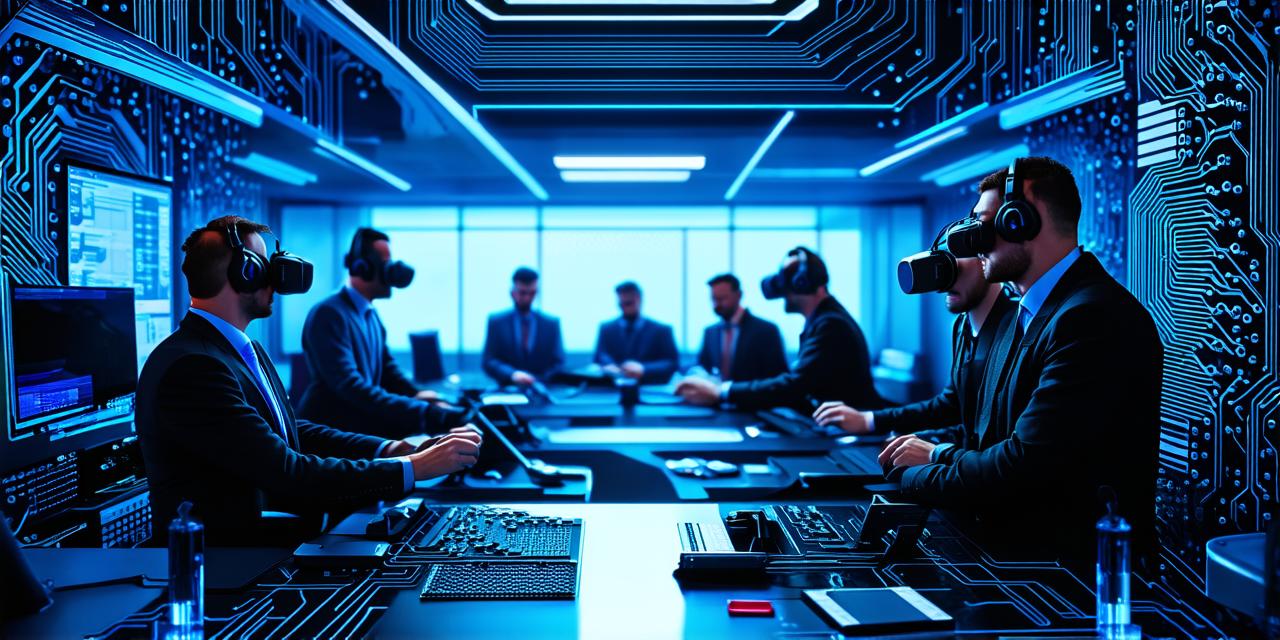<!DOCTYPE html>
Pros of VR Development
Enhanced Customer Experience
One of the biggest advantages of VR technology is its ability to create immersive, engaging experiences that can transport customers into virtual worlds. This technology can be used in a variety of industries, from retail and hospitality to healthcare and education.
For example, a car manufacturer can use VR technology to allow customers to virtually test drive a new model before they make a purchase. A hotel chain can also use VR to give potential customers a virtual tour of their properties.
This can lead to increased customer satisfaction and loyalty, as well as improved brand recognition and reputation.
Increased Productivity
VR technology can also be used to improve productivity in the workplace.
For example, employees can use VR to simulate real-world scenarios and train for high-risk jobs, such as construction or emergency response. This can help reduce accidents and injuries, while also improving job satisfaction and retention rates.
In addition, VR training can be more cost-effective than traditional training methods, as it eliminates the need for expensive equipment, materials, and travel expenses.
Improved Collaboration
Virtual reality can also be used to improve collaboration between teams in different locations.
For example, a team of architects and engineers can use VR technology to work together on a project in real-time, regardless of where they are located. This can help streamline the design process, reduce errors, and increase efficiency.
VR can also facilitate more effective communication and collaboration by providing a shared visualization of the project, which can help team members better understand each other’s perspectives and ideas.
Cons of VR Development
High Cost
One of the biggest drawbacks of VR technology is its high cost. Developing a VR application can be expensive, especially if you need specialized hardware or software.
In addition, maintaining and updating the technology can also be costly, as it requires regular maintenance and support to ensure optimal performance and user experience.
As a result, businesses may want to carefully consider whether the potential benefits of VR development justify the investment.
Limited Adoption
Another concern for businesses is the limited adoption of VR technology.
While VR is becoming more popular, not all customers or employees are yet comfortable with the technology. This can make it difficult to justify the investment in VR development if there is a risk that it will not be widely adopted.
In addition, some businesses may face resistance from employees who are resistant to change or fearful of the new technology.
Technical Issues
Virtual reality can also be affected by technical issues such as motion sickness and lag time. These issues can affect customer experience and productivity, and may require additional development or support costs to address.
For example, a VR application that causes motion sickness can lead to negative reviews and lost customers, while a VR application with lag time can affect employee performance and job satisfaction.
Case Studies
To illustrate the potential benefits of VR development for businesses, let’s take a look at some real-life examples:
IKEA
IKEA is using VR technology to allow customers to virtually see how furniture will look in their homes before making a purchase. This has led to increased customer satisfaction and reduced returns, resulting in significant cost savings for the company.
In addition, IKEA has also used VR technology to simulate real-world scenarios and train employees on how to assemble and install furniture, which has improved productivity and quality control.
Aviation Industry
The aviation industry is using VR technology to train pilots and cabin crew members on how to operate aircraft safely and efficiently. For example, Boeing uses VR simulations to train pilots on how to fly the 737 Max aircraft, which has been involved in several fatal crashes due to technical malfunctions.
VR training can be more effective than traditional training methods, as it provides a realistic simulation of the flying experience and allows trainees to practice their skills in a safe and controlled environment.
Healthcare Industry
The healthcare industry is using VR technology to enhance patient care and improve medical procedures. For example, surgeons can use VR simulations to practice complex surgeries before performing them on real patients, which can reduce the risk of complications and improve patient outcomes.
In addition, VR technology can be used to simulate pain management techniques and therapies, such as exposure therapy for anxiety disorders or virtual reality exposure therapy for post-traumatic stress disorder (PTSD).
Summary
Virtual reality technology has the potential to revolutionize the way businesses operate and enhance their customer experience, increase productivity, and improve collaboration.
While there are concerns about the high cost and limited adoption of VR technology, the potential benefits make it an attractive investment for businesses looking to stay ahead of the curve. By carefully considering the pros and cons and weighing the costs against the potential benefits, businesses can make informed decisions about whether VR development is worth the investment.
In addition, businesses should also consider partnering with VR experts and providers to ensure that their VR applications are developed and implemented effectively and efficiently.
